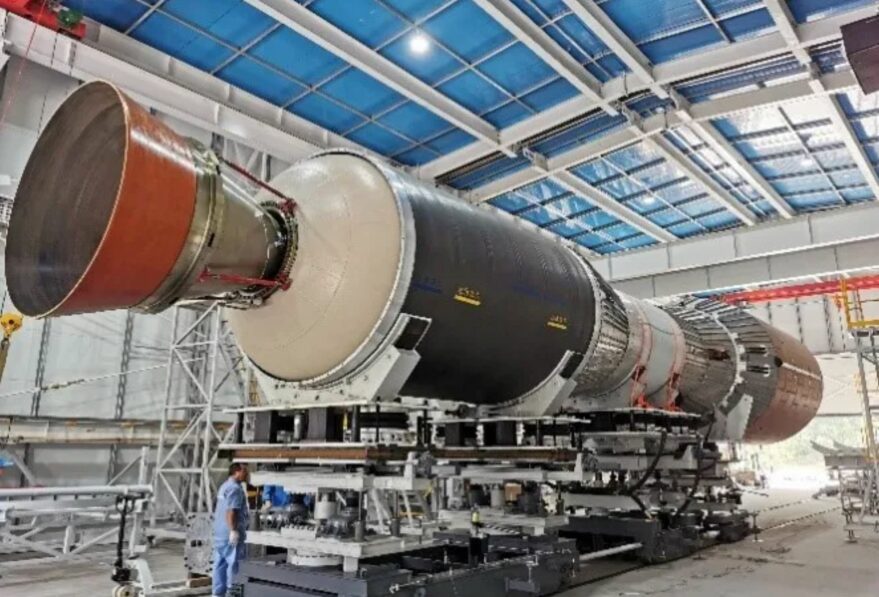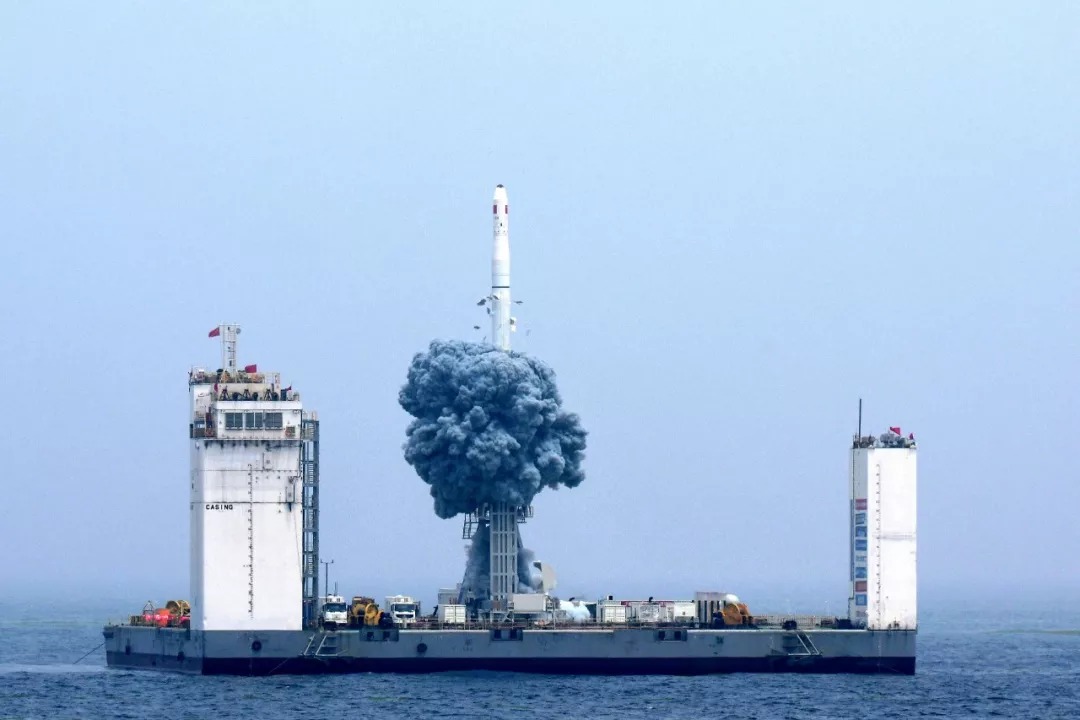HELSINKI — Chinese state-owned entities are developing a growing range of solid rockets to meet growing launch demands and contribute to a wider strategy of making China a fully-fledged space power.
Jielong-3, also known as Smart Dragon-3, is expected to make its first flight in September according to recent state media reports. It will be able to launch from land or sea, with new maritime launch facilities both providing greater flexibility and reducing pressure on China’s main spaceports.
The new launcher is being developed by the China Academy of Launch Vehicle Technology (CALT), a major rocket developer under the ownership of CASC, China’s main space contractor. It is also the latest in a line of planned solid rockets, despite some having very similar capabilities.
“This very much fits with China’s long term doctrine of becoming a full-fledged space power, for which it is essential to master a wide array of capabilities,” Tomas Hrozensky, a researcher at the European Space Policy Institute (ESPI), told SpaceNews.
“Reading through some of the statements from officials behind these solid fuelled launchers, it seems to me there is a clear belief that these new vehicles, because of their inherent characteristics as solid-fueled launchers, will reply to important needs of China’s and international space sectors,” Hrozensky says.
Light lift rockets would provide responsive launch opportunities, and possibly easier integration into operations from various spaceports, including sea-based launches.
Meanwhile heavy lift rockets would provide “suitable options for mass-hungry, non-crewed infrastructure deployments for future in-orbit economy, such as constellations, space stations, or even deep space ambitions.”
Jielong-3 is stated to be capable of sending 1,500 kilograms of payload into a 500-kilometer Sun-synchronous orbit (SSO). Smart Dragon series rockets are operated by CALT spinoff China Rocket. The smaller Smart Dragon-1 launched for the first and so far only time in August 2019.
Another similar entity, CAS Space, registered in December 2018 as Beijing Zhongke Aerospace Exploration Technology Co., Ltd., and spun off from the Chinese Academy of Sciences (CAS), is also developing solid rockets.
CAS Space conducted ground tests for the four-stage ZK-1A in November 2021 and is expected to attempt a first launch in the near future.

It will also be capable of lifting 1,500 kilograms to a 500-kilometer SSO. Last year the larger ZK-2 was slated to be ready for flight before the end of 2022 and able to send 3,550 kilograms into a 700-kilometer SSO.
All of the above would be more capable than the Long March 11, currently China’s most powerful solid propellant launch vehicle.
“Overall, from a strategic point of view, mastering such a new capability gives China flexibility and redundancy, demonstrates technological prowess to the outside world and create important synergies for other, non-space objectives,” Hrozensky says, who also notes an inherent connection with China’s military programs for ballistic missiles and air defense.
More competition–and redundancy and options–comes from CASIC, another giant state-owned defense contractor and considered a sister company to CASC. Spinoff Expace operates the Kuaizhou series of solid rockets.
The Kuaizhou-1A (200 kilograms to 700-kilometer SSO) has flown 14 times. However, a Dec. 15 failure of its could bring lengthy delays, just months after the rocket returned to action following being grounded for one year due to a 2020 failure.
The larger Kuaizhou-11–capable of delivering 1,000 kilograms to a 700-kilometer SSO–has yet to fly following the loss of its first flight in 2020.
Design work on the Kuaizhou-21 launch vehicle began in 2017, according to Chinese state media. It will have a diameter of 4.5 meters and be capable of sending 20,000 kilograms into a low Earth orbit.
The planned Kuaizhou-31 would be capable of sending 70,000 kilograms into LEO – almost three times the lift capacity of China’s current largest rocket, the Long March 5.
A number of launch contract opportunities are emerging that could help support new vehicles, even beyond a planned national broadband megaconstellation. CASIC has commercial satellite constellation plans of its own with Xingyun, a planned 80-satellite narrowband constellation to be operated by spinoff Leobit.
The CASIC-led 68.8-square-kilometer Wuhan National Aerospace Industrial Base became fully operational in February 2021 and capable of assembling and testing 20 solid rockets and producing 240 small satellites each year.
On Wednesday the Wuhan municipal government released a policy document further supporting the development of the space industry in the city, noting launch vehicles and launch services, satellite platforms and payloads, space information application services and space ground equipment and manufacturing as activities to be promoted.
CAS Space meanwhile has an industrial base in Guangzhou, where a space arm of Geely, an car maker with plans to build a low Earth constellation for autonomous driving, is also setting up and potentially providing launch contracts.
Private firms iSpace and Galactic Energy, while developing reusable liquid launchers, are also operating light-lift solid rockets.
China is also developing new spaceports to support its space sector boom, with the coastal cities of Ningbo and Wenchang planning construction of commercial spaceports to meet growing demand for launch.
CASC alone is planning more than 50 launches in 2022. Just a handful will use the solid Long March 11 and Jielong-3 launchers. A new Long March 6A will also test the first Chinese combination of liquid core and solid side boosters from a dedicated new launch complex at Taiyuan.
